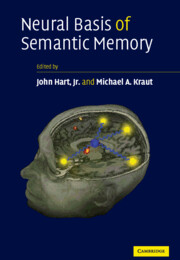
- Cited by 4
-
Cited byCrossref Citations
This Book has been cited by the following publications. This list is generated based on data provided by Crossref.
Lee, Donghoon and Newman, Sharlene D. 2010. The effect of presentation paradigm on syntactic processing: An event‐related fMRI study. Human Brain Mapping, Vol. 31, Issue. 1, p. 65.
Damasceno, Benito 2020. Research on Cognition Disorders. p. 59.
Schatz, Sara 2020. Neurostimulation and Neuromodulation in Contemporary Therapeutic Practice.
Khatin-Zadeh, Omid and Farsani, Danyal 2022. The understanding of abstract concepts: a perspective from distributed models of conceptual representation. Discover Psychology, Vol. 2, Issue. 1,
- Publisher:
- Cambridge University Press
- Online publication date:
- September 2009
- Print publication year:
- 2007
- Online ISBN:
- 9780511544965
- Subjects:
- Neurology and Clinical Neuroscience, Medicine




